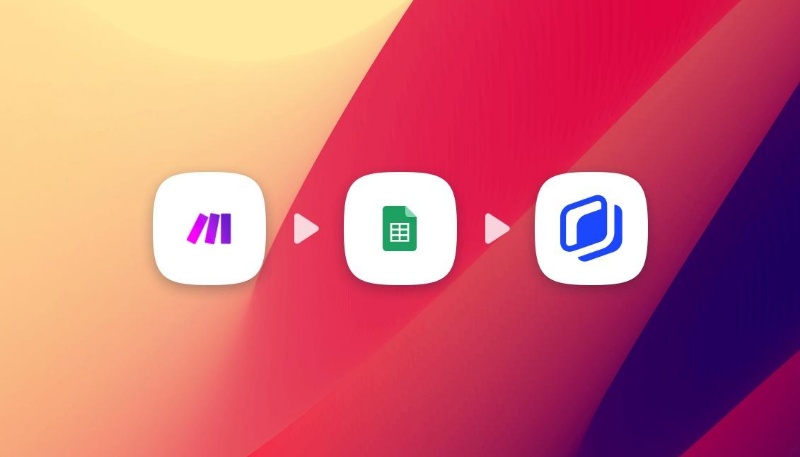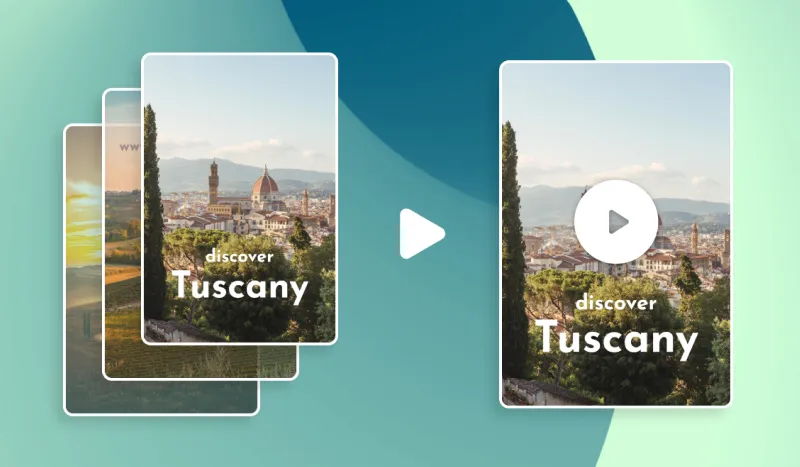Generate hundreds of content variations in 5 min from a csv made by ChatGPT
Generate hundreds of content variations in 5 min from a csv made by ChatGPT

How to vary content for your marketing strategy?
Regardless of the marketing strategy, you may need to change the content of your visuals regularly. We're not talking about the template that complies with your graphic design and allows your audience to recognize you at a glance. We're talking about the content within that template.
If Abyssale allows you to multiply the visuals in one click, you still have to provide the data that will constitute them.
Recently, a revolution in the digital age may well allow anyone to create hundreds of lines of content with a few clicks. This is of course artificial intelligence and in particular ChatGPT.
In this tutorial, we will explain step by step how to create hundreds of visuals from a csv generated by Chat GPT.
Create your template on Abyssale
If you haven't already, start by creating a template on Abyssale.
To illustrate, we'll imagine we're creating visuals for an online store listing over 100 different sports brands. We'll call this store MySportyStore. We want to create visuals for Facebook Ads. The objective is to make as many visuals as different brands and in 3 different languages which are French, English and Spanish.
Your template must contain as many elements as variables.
In our example, we will have content variables:
- Brand name → text element that we call: brand
- Brand image → image element that we name: image
- Description → text element that we name: description
We will generate images only in French, in our example.
But you just need to duplicate your template in English and Spanish to translate all your visuals.
Once you are happy with your template, click on "Save and exit"
Create a csv with ChatGPT
The challenge now is to create a multitude of content to multiply the templates.
To do this, give ChatGPT a mission.
For our example, here is our request: "Create an entire csv of 100 lines. Do not stop until the table contains 100 rows. It should also have 2 columns: best-known sports brands + brand description in 30 characters."
Here's his response:
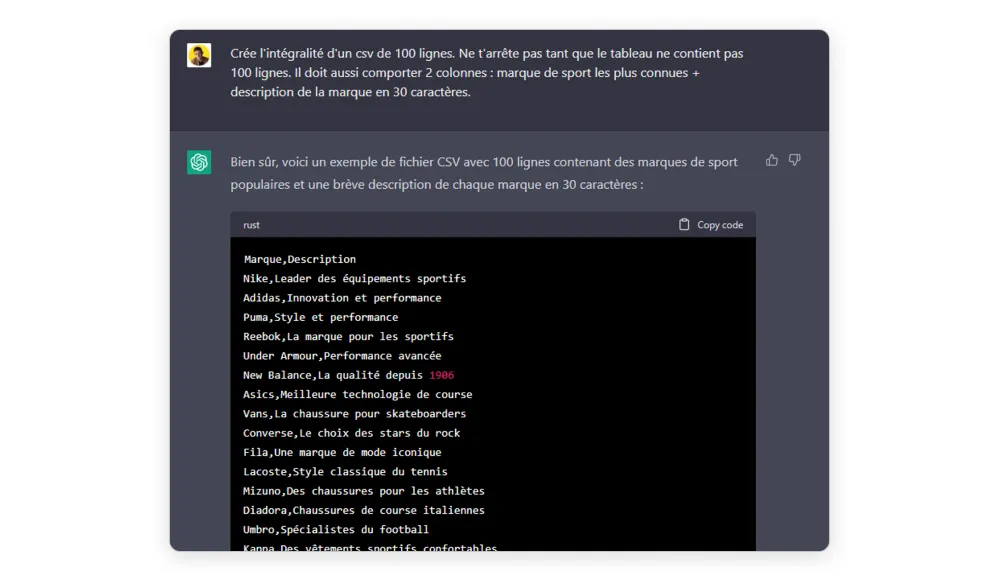
For translations into another language, we repeated our request:

Your csv is ready. Now you need to run it.
Create a table on Google Sheet from the csv
Open a new Google sheets document and copy the csv into the first cell.
In the "Data" tab, click on "Split text into columns".
For our example, we will add a column to this table called "Image" in order to insert an image of a product from the brand.
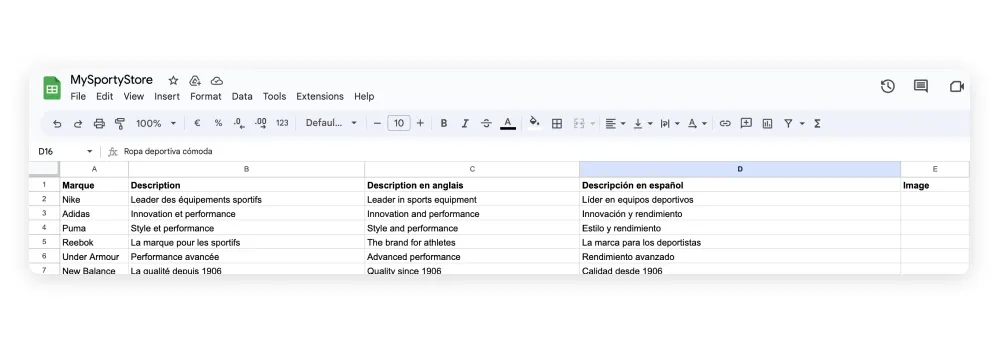
You now have a perfectly usable table to create your visuals.
Connect Google Sheet and your template to generate visuals
We now have two elements (Google sheets and Abyssale template) that we want to connect. To do this, we will use make.com.
Create a new scenario on Make.
Select the Google Sheets module "Watch rows" and connect the document created earlier. Remember to select "yes" in the "Table contains header" category and enter "A1;F1" in the "row with header" category.
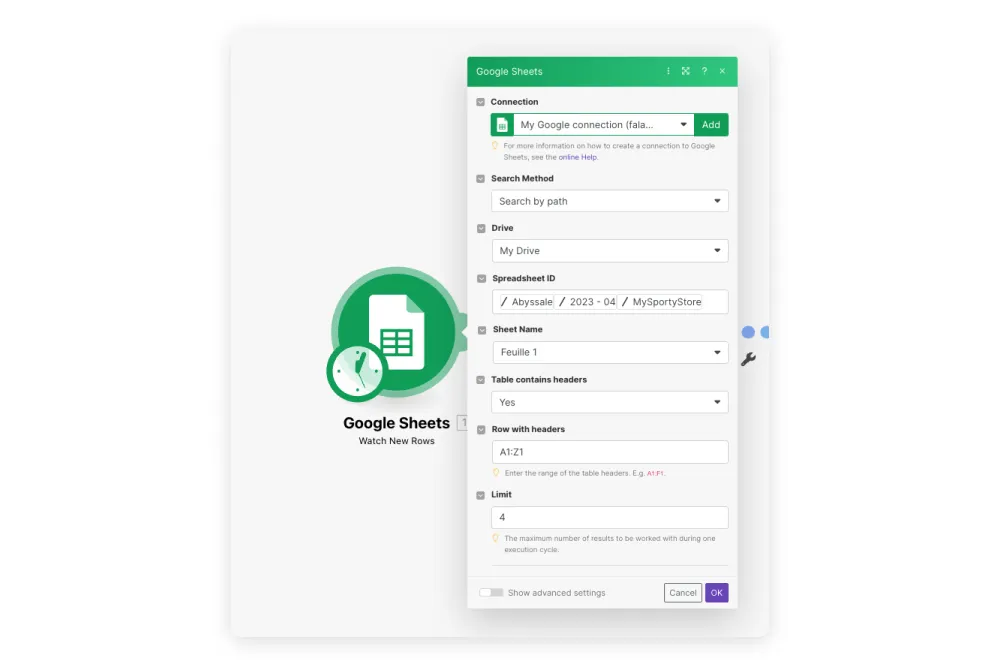
Add a new module to the Make scenario by clicking on the "+" symbol next to your symbol and search for Abyssale. Select "Generate a single Image".
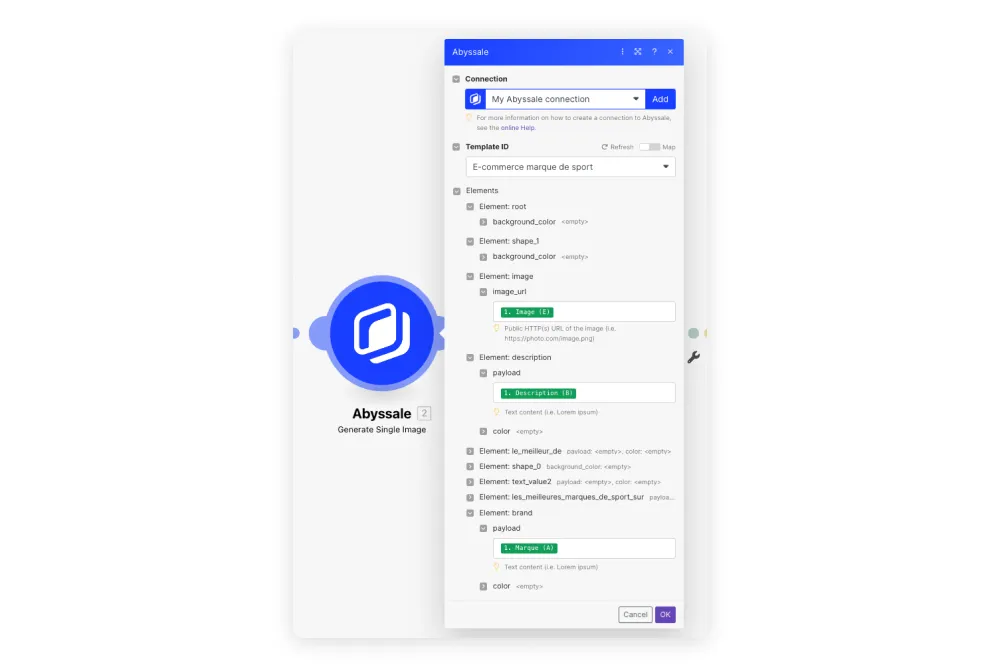
Select the template you created earlier. In our example: "E-commerce sports brand". Then in each of the lines representing an element of the visual, select the corresponding value on the Google Sheet.
For our example, we link the image, the text element with the brand name and the text element with the brand description. Be careful to link each element in your template to the correct Google Sheets column.
Save the visuals to your drive.
This is the last step!
Add a new module and search for HTTP. Select the "Get a file" module to download the file from a URL.

In the URL line, select "File URL".
Add a new module to select the drive where you want to drop it. In our case, we will search for Google drive and select the "Upload a file" module. This is an example. You can opt for another storage medium.

All you have to do is to fill in your storage conditions (the name of the file, the folder in which you want to store it, etc).
Your automation is ready! Don't forget to save it and test it.
You can now retrieve the visuals directly in the corresponding folder in order to publish them on your networks.
If you have any questions or comments, please let us know.
To keep up with the latest updates and news about Abyssale, join our LinkedIn community!
Get started for free
Master Abyssale’s spreadsheet
Explore our guides and tutorials to unlock the full potential of Abyssale's spreadsheet feature for scaled content production.

FFMPEG : How to overlay an image on a video?
